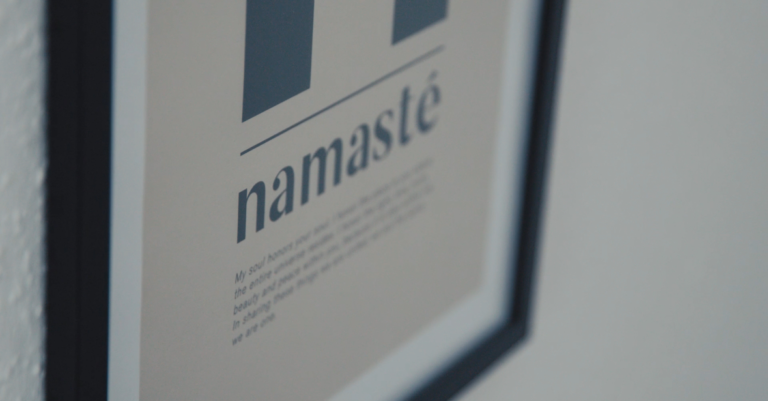Welcome to a profound exploration of compassion and healing through the practice of “Tonglen Meditation Script.” In a world where empathy often feels scarce, Tonglen offers a powerful antidote—a practice that not only nurtures our own hearts but extends compassion to all beings.
Imagine a meditation that transforms pain into healing, fear into courage, and isolation into connection. This is the essence of Tonglen—a practice rooted in the ancient wisdom of Tibetan Buddhism yet profoundly relevant in today’s world.
Understanding Tonglen Meditation Script
Tonglen meditation is a powerful practice that involves sending and receiving. It is a Tibetan Buddhist meditation that aims to cultivate compassion and empathy towards oneself and others. The practice involves visualizing taking in the suffering of others and sending out love and compassion to them.
During the tonglen meditation, I focus on my breath and visualize the suffering of others. I imagine taking in their pain and suffering as I inhale and sending them love and compassion as I exhale. The practice helps me to develop a sense of empathy and compassion towards others.
Tonglen meditation script is a practice that can be done by anyone, regardless of their spiritual beliefs. It is a practice that can be done alone or with others. Additionally, it can be done in any quiet space, such as a bedroom or meditation room.
Tonglen meditation script is a powerful practice that involves sending and receiving. It is a practice that can be done by anyone, regardless of their spiritual beliefs. The practice aims to cultivate compassion and empathy towards oneself and others.
The Four-Stage Tonglen Process For Tonglen Meditation Script

Tonglen meditation is a practice that aims to cultivate compassion and empathy towards others by visualizing their suffering and sending them relief. The practice involves four stages, each of which is designed to help us develop a deeper understanding of the pain and suffering of others, and to generate a sense of compassion and empathy towards them.
Stage One: Generating Compassion
The first stage of the Tonglen process involves generating a sense of compassion towards others. This involves focusing on the suffering of others and acknowledging their pain and struggles. To do this, I take a deep breath and try to connect with the suffering of others. I try to imagine what it would be like to be in their shoes and feel their pain. This helps me to generate a sense of compassion and empathy towards them.
Stage Two: Visualization of Suffering
The second stage of the Tonglen process involves visualizing the suffering of others. This involves imagining their pain and struggles in vivid detail. I try to visualize their suffering as clearly as possible, imagining every detail of their pain and discomfort. This helps me to develop a deeper understanding of their suffering and to generate a sense of empathy towards them.

Stage Three: Taking In Pain
The third stage of the Tonglen process involves taking in the pain and suffering of others. This involves breathing in their pain and suffering, and allowing it to enter my own body. I try to imagine their pain and suffering as a dark cloud, and as I breathe in, I imagine the cloud entering my body. This helps me to develop a sense of connection with others and to feel their pain and suffering as my own.
Stage Four: Sending Out Relief
The fourth and final stage of the Tonglen process involves sending out relief to others. This involves breathing out a sense of peace, love, and compassion towards others. I try to imagine my breath as a bright light, and as I breathe out, I imagine the light spreading out to others and relieving their pain and suffering. This helps me to develop a sense of connection with others and to feel a sense of joy and happiness in helping to relieve their suffering.
The four-stage Tonglen process is a powerful tool for cultivating compassion and empathy towards others. By visualizing their suffering and sending them relief, we can develop a deeper understanding of their pain and struggles, and develop a sense of connection and empathy towards them. With practice, the Tonglen process can help us to become more compassionate, empathetic, and loving individuals.
Tonglen Meditation Script 1

Introduction: Welcome to this Tonglen meditation practice. Tonglen is a powerful Tibetan Buddhist meditation practice that cultivates compassion and empathy. In this meditation, we’ll be using the breath to cultivate compassion for ourselves and others.
Guided Practice:
- Find a comfortable seated position, either on a cushion or a chair, with your spine upright and your hands resting gently on your knees.
- Take a few deep breaths, allowing yourself to settle into this present moment.
- As you inhale, imagine breathing in any suffering or pain that you or others may be experiencing. Visualize it as dark, heavy smoke.
- As you exhale, imagine sending out feelings of love, compassion, and healing to yourself and others. Visualize it as bright, warm light.
- Continue this process with each breath, breathing in suffering and exhaling love and compassion.
- Notice any resistance or discomfort that arises as you do this practice, and simply observe it without judgment. Allow it to be there, and continue with the practice.
- As you continue, you may find that your heart opens more and more, and that you are able to cultivate deeper compassion for yourself and others.
- When you feel ready, gently bring your awareness back to your breath. Take a few more deep breaths, and then slowly open your eyes.
Closing: As we conclude this Tonglen meditation, take a moment to acknowledge the compassion and love that you’ve cultivated within yourself. Carry this feeling with you as you go about your day, and know that you have the power to bring healing and kindness to yourself and others.
Tonglen Meditation Script 2

Introduction: Welcome to this Tonglen meditation practice. Tonglen is a profound practice for developing compassion and empathy towards ourselves and others. Today, we will engage in this practice to open our hearts and minds to the suffering and joys of the world.
Guided Practice:
- Find a comfortable seated position, allowing your spine to be upright and your body relaxed. Close your eyes gently.
- Take a few moments to connect with your breath. Feel the sensation of the breath flowing in and out of your body.
- With each inhale, visualize yourself breathing in any pain, suffering, or discomfort that you may be feeling or that others may be experiencing. See this suffering as dark smoke.
- As you exhale, imagine yourself sending out waves of love, compassion, and healing to yourself and to all beings. Visualize this love and compassion as a warm, golden light.
- With each breath, continue to breathe in suffering and exhale compassion. Feel the rhythm of the breath as it moves through you.
- Notice any sensations or emotions that arise as you engage in this practice. Allow yourself to feel whatever comes up, without judgment or resistance.
- As you continue, see if you can expand your awareness to include all beings, near and far, known and unknown. Recognize that we are all interconnected in our humanity.
- If you find your mind wandering, gently bring your attention back to the breath and the visualization.
- Continue this practice for a few more moments, allowing yourself to fully embody the qualities of compassion and empathy.
- When you feel ready, gently release the visualization and return your awareness to the present moment.
Closing: As we come to the end of this Tonglen meditation, take a moment to notice how you feel. Notice any shifts or changes in your body, mind, or heart. Know that through this practice, you have cultivated seeds of compassion and empathy within yourself that you can carry with you into the world. Thank yourself for taking this time to nurture these qualities within you. When you are ready, gently open your eyes and return to your surroundings.
FAQ
What is Tonglen meditation script, and how does it differ from other meditation practices?
Tonglen meditation script is a Tibetan Buddhist practice that involves the exchange of suffering and compassion. Unlike traditional meditation practices focused on relaxation or mindfulness, Tonglen emphasizes compassion for oneself and others by visualizing the inhalation of suffering and the exhalation of compassion.
Is Tonglen meditation script suitable for beginners, or does it require prior experience in meditation?
Tonglen meditation script can be practiced by individuals of all experience levels, including beginners. While some familiarity with basic meditation techniques may be helpful, it is not a prerequisite. The practice is accessible to anyone with an open heart and a willingness to cultivate compassion.
How does Tonglen meditation script benefit practitioners, and what can one expect from consistent practice?
Tonglen meditation script offers numerous benefits, including fostering empathy, compassion, and emotional resilience. Through the practice of Tonglen, individuals learn to transform their relationship with suffering and develop a deeper sense of connection with others. Consistent practice can lead to greater emotional well-being and a more compassionate outlook on life.
What are the main components of a Tonglen meditation script, and how can they be effectively practiced?
A Tonglen meditation script typically includes instructions for visualization, breathwork, and intention setting. Practitioners are guided to visualize inhaling the suffering of themselves or others and exhaling compassion and healing.
If you liked this blog article about tonglen meditation script, don’t forget to follow us on Pinterest so you don’t miss any more meditation news!





